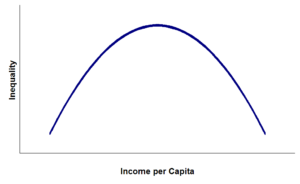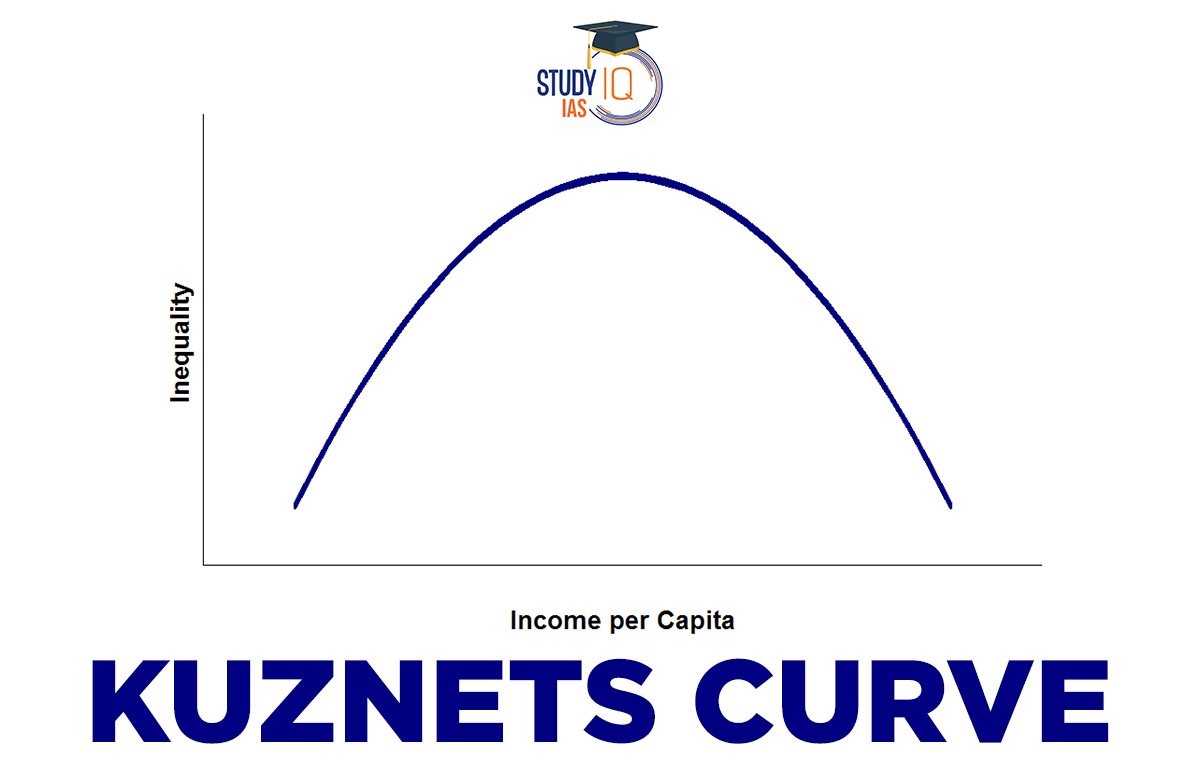Table of Contents
Kuznets Curve
The Kuznets curve is an economic concept that describes the relationship between economic development and income inequality. The curve was named after Simon Kuznets, a Nobel Prize-winning economist who first proposed the idea in the 1950s.
According to the Kuznets curve, income inequality tends to increase in the early stages of economic development, as a country moves from an agricultural-based economy to an industrial-based one. However, as economic development continues and a country becomes more prosperous, income inequality begins to decrease.
Kuznets Curve Graph
The Kuznets Curve is often depicted as an inverted U-shape, with income inequality rising during the early stages of development and then declining once a certain level of economic prosperity is reached. However, there is debate over whether this pattern holds true in all cases, and some researchers have suggested that other factors, such as government policies, can influence the relationship between economic development and income inequality

Read about: Phillips Curve
Kuznetz Curve Hypothesis
The Kuznets curve hypothesis is the idea that economic development is associated with a specific pattern of income inequality over time, as described by the Kuznets curve. The hypothesis suggests that income inequality initially increases as a country undergoes economic development, but then reaches a peak and begins to decline as the country becomes more prosperous.
Kuznets observed that in the early stages of industrialization, income inequality tended to increase as workers moved from low-paying agricultural jobs to higher-paying industrial jobs. However, as a country became more prosperous and developed, income inequality tended to decline as workers gained access to better education, training, and job opportunities.
Read about: Gini Coefficient
Kuznets Curve in Economics Applications
The Kuznets curve has several applications in economics, including:
Understanding Relationship between Economic Development and Income Inequality
The Kuznets curve provides a framework for understanding how income inequality changes over time as a country develops. This can help policymakers to design interventions to reduce income inequality in the early stages of development and promote economic growth in the later stages.
Identifying the Drivers of Income Inequality
The Kuznets curve suggests that income inequality is driven by structural changes in the economy as a country develops. By examining the factors that contribute to income inequality at different stages of development, policymakers can identify the most effective ways to reduce inequality.
Evaluating the Effectiveness of Economic Policies
The Kuznets curve can be used to evaluate the effectiveness of economic policies designed to reduce income inequality. By comparing income inequality before and after the implementation of a policy, policymakers can determine whether the policy has been successful in achieving its goals.
Predicting the Future of Income Inequality
The Kuznets curve can also be used to make predictions about the future of income inequality in a country. By examining the current stage of development and economic growth, policymakers can estimate where a country is on the Kuznets curve and predict how income inequality is likely to change in the future.
Read about: Lorenz Curve
Kuznets Curve Criticism
While the Kuznets curve hypothesis has been influential in shaping our understanding of the relationship between economic development and income inequality, it has also been subject to criticism. Some researchers argue that the pattern described by the Kuznets curve is not universal and that factors such as government policies, social institutions, and cultural norms can influence the relationship between economic development and income inequality in different ways.
Read about: Purchasing Power Parity
Kuznets Curve UPSC
The Kuznets Curve is a relevant topic for the UPSC Economics Syllabus and has implications for other subjects such as sociology, public administration, and international relations. Aspirants preparing for the UPSC exam can benefit from UPSC Online Coaching and UPSC Mock Test to understand income inequality patterns, economic policies, and limitations of the Curve.
Read about: Basel Norms


 Repo Rate and Reverse Repo Rate, Impact ...
Repo Rate and Reverse Repo Rate, Impact ...
 Foreign Contribution Regulation Act (FCR...
Foreign Contribution Regulation Act (FCR...
 Urban Cooperative Banks in India, Functi...
Urban Cooperative Banks in India, Functi...





















